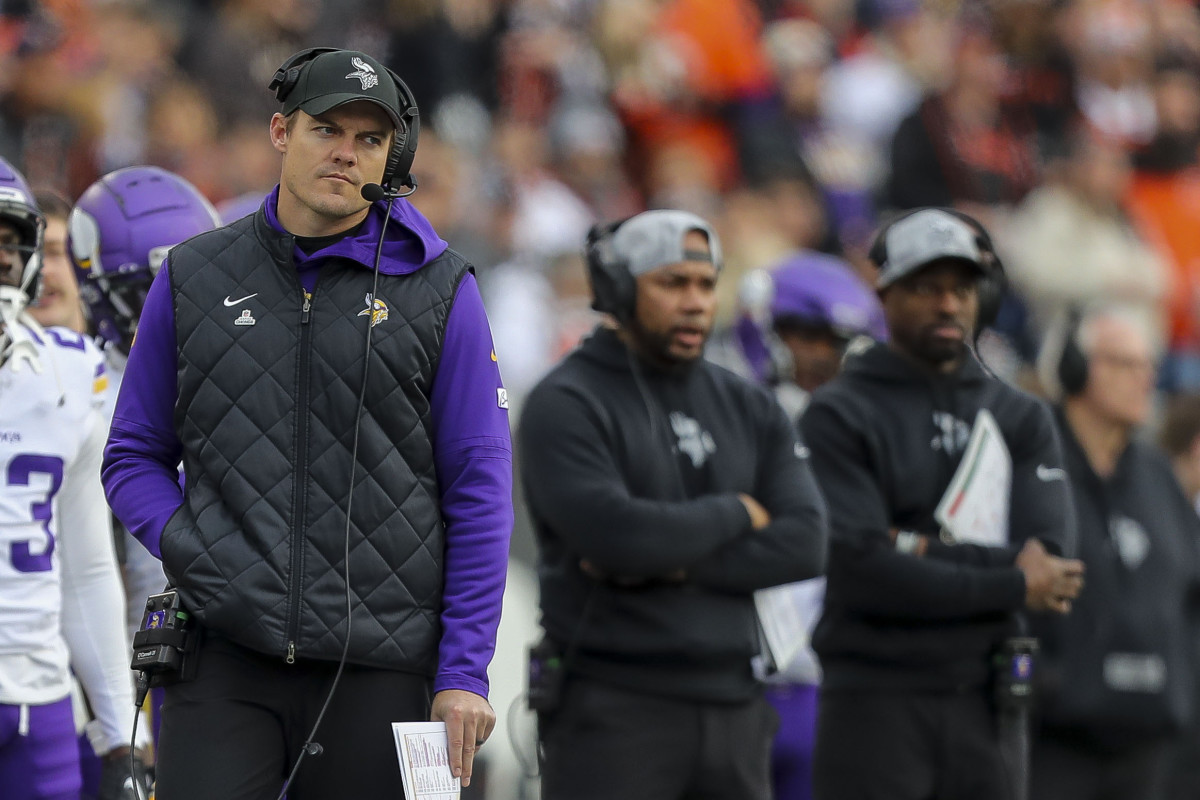Vikings' Kevin O'Connell explains failed 'tush push' attempts in overtime v. Bengals

Vikings head coach Kevin O'Connell has found himself one of the major talking points from Saturday's 27-24 loss at the Cincinnati Bengals over his decision to run two ultimately unsuccessful "tush push" plays that ultimately secured his side's defeat.
The Vikings had grabbed the advantage on the opening drive of overtime, forcing the Bengals to punt and getting the ball at their own 37 knowing a field goal would win the game.
And after finding themselves at the Bengals 42 knowing only a few more short gains would get them within field range, O'Connell opted to go for the "tush push" quarterback sneak on 3rd-and-1.
With Nick Mullens coming up short on the first attempt – albeit aided by an arguably questionable spot by the refs – they went for it again and were stuffed by the Bengals, who then marched down to grab a winning field goal.

Among the questions asked of O'Connell after the game was that the player providing the "push" to Mullens was the 5-foot-8, 181 lbs. receiver Brandon Powell, and not a heavier body such as fullback C.J. Ham.
Speaking to reporters after the game, O'Connell said he wanted to stick with his 11 personnel of three receivers, one running back and one TE in order to stop the Bengals from putting in a goal-line defense, hence why Powell was on the field and had a role in the play.
He was also asked why the ball wasn't handed off to a running back such as Ty Chandler, who racked up more than 100 yards on the
"On the last one we were really looking at 4 or 5 inches there, I don't want to have to turn around and extend the ball and hand off another ball. I trust out guys in that moment to execute, wanted to stay in 11 personnel to keep them out of goal line defense ... I thought we could execute just with some interior push right there, but based upon how it was spotted they got the stop."
5 things that stood out in the Vikings' meltdown in Cincinnati
O'Connell questioned the spotting on the 3rd-and-1 tush push, believing that Mullens was closer to getting the first down than the refs spotted it.
He said he was told that the booth had reviewed the spot, and if they hadn't looked at the spot he would have taken a timeout.
"I started calling a 1st-and-10 play because I saw him, I was standing right there across the line, but the side judge on the other side must have had him short, saw his knee go down," O'Connell said.
"I thought we had a good look at it on third down. Officials spotted it otherwise. We gotta be able to get a little bit more than that in that moment, in an inches-type situation," he added.
